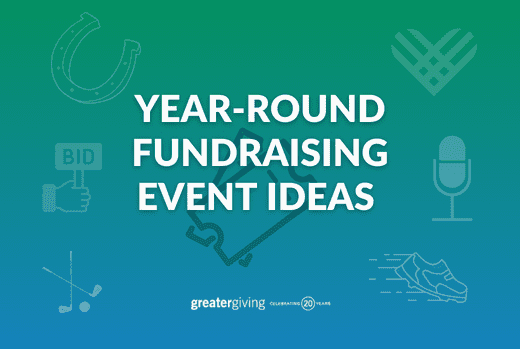Online Fundraising: Proven Strategies to Increase More Funds for Your Nonprofit
Online Fundraising: Proven Strategies to Increase More Funds for Your Nonprofit
Blog Article
The Role of Neighborhood Engagement in Nonprofit Fundraising: Building Lasting Relationships for Sustainable Support
Neighborhood involvement is progressively acknowledged as a vital part of effective not-for-profit fundraising. By promoting genuine relationships with local stakeholders, companies can cultivate count on and commitment, which are crucial for lasting assistance. Nonetheless, the methods and strategies utilized to engage neighborhoods vary extensively, increasing essential inquiries concerning efficiency and effect. What are the ideal techniques for growing these important links, and exactly how can nonprofits measure their success in this field? Understanding these dynamics could considerably affect the future of fundraising efforts and the total mission of nonprofit organizations.
Comprehending Area Involvement
Neighborhood involvement is a vital element of effective nonprofit fundraising initiatives. Nonprofits need to determine vital stakeholders-- such as area members, local companies, and other companies-- to create effective involvement methods.
Efficient area engagement is asserted on active listening and responsiveness to the requirements and passions of the community. This process entails obtaining responses, comprehending community characteristics, and making certain that the organization's objective straightens with regional top priorities. Involving the neighborhood can take numerous forms, consisting of public conferences, volunteer chances, and collaboration initiatives, each designed to encourage participation and investment in the organization's goals.
Additionally, area interaction must be approached as an ongoing dialogue instead of a single effort. By cultivating an inclusive setting where community voices are listened to and valued, nonprofits can construct a solid structure for future fundraising undertakings. Ultimately, a deep understanding of neighborhood interaction empowers organizations to develop genuine connections that enhance their total efficiency and sustainability.
Advantages of Strong Relationships
Strong connections developed with area involvement return countless advantages for nonprofit fundraising initiatives. Primarily, these connections foster depend on and reliability, important components in motivating benefactors to contribute. When potential advocates see a nonprofit actively associated with their community, they are most likely to count on its objective and influence.

Moreover, these relationships promote efficient communication. Nonprofits can utilize their connections to share stories of effect, updates, and needs, making certain that advocates stay educated and involved. This open line of interaction not just reinforces bonds but also encourages word-of-mouth promo, expanding the nonprofit's reach.
Lastly, strong community connections can bring in brand-new companions and enrollers. Organizations and individuals are a lot more inclined to align with organizations that demonstrate meaningful area involvement, offering added sources and assistance that can substantially improve fundraising capabilities. Hence, cultivating robust connections via community engagement is essential to a nonprofit's long-term fundraising success.
Approaches for Efficient Interaction
How can nonprofits successfully engage their neighborhoods to boost browse around this web-site fundraising efforts? Routine updates, engaging content, and calls-to-action can galvanize area passion and engagement.
Second, hosting community events, such as workshops, volunteer opportunities, or fundraising drives, promotes in person communication, allowing nonprofits to showcase their influence and initiatives. These occasions not only increase funds however likewise cultivate relationships and enable community members to involve directly with the reason.
Third, carrying out individualized communication techniques can enhance interaction. Tailoring messages to specific contributor segments based on rate of interests and previous contributions cultivates a sense of belonging and investment in the organization's goal.
Last but not least, creating collaborations with local services and area leaders can magnify outreach efforts. Collaborative initiatives can boost visibility and integrity, demonstrating a cumulative dedication to the community's health. By integrating these approaches, nonprofits can construct lasting partnerships that improve fundraising efforts and drive sustainable assistance.
Measuring Engagement Success
While engaging the community is important for effective not-for-profit fundraising, gauging the performance of these engagement initiatives is similarly essential. Developing clear metrics permits companies to evaluate exactly how well they are getting in touch with their audience and achieving their fundraising objectives. Trick efficiency indicators (KPIs) such as contributor retention rates, volunteer engagement degrees, and involvement on social media sites platforms give tangible data for examination.

On a regular basis evaluating these metrics allows companies to pivot their techniques when required, making sure that community engagement remains straightened with their total mission. In addition, sharing these results with stakeholders fosters openness and constructs depend on, encouraging further community involvement. Ultimately, a durable measurement framework not only informs future fundraising campaigns yet likewise strengthens the partnership in between the nonprofit and its advocates, preparing for lasting success.
Situation Researches in Community Effect
Numerous study illustrate the extensive effect that community involvement can carry nonprofit fundraising success. One noteworthy example is the "Food for Idea" initiative, where a local food financial institution partnered with organizations and institutions to host neighborhood dinners. These occasions not only increased funds but also promoted a feeling of belonging amongst participants, significantly boosting benefactor retention rates.
Another engaging situation is the "Eco-friendly Spaces Project," which involved regional residents in the revitalization of metropolitan parks. This campaign not just garnered monetary assistance from local organizations but also grew a volunteer base that added to ongoing maintenance and programs. The sense of index ownership and pride amongst neighborhood participants converted into continual contributions.
In the world of arts, the "Art for All" campaign efficiently engaged regional musicians and clients to produce collaborative art installments, leading to increased presence and contributions for a regional arts nonprofit.
These examples highlight that when nonprofits focus on neighborhood participation, they can produce long lasting partnerships that boost fundraising efforts, ensuring lasting support and cultivating a lively area culture. Such cases show that community engagement is not merely a strategy but a crucial pillar of nonprofit success.
Verdict
In final thought, area engagement is important to the success of nonprofit fundraising initiatives. Eventually, a robust foundation of neighborhood support not just intensifies fundraising potential but additionally cultivates a culture of cooperation, vital for accomplishing long-term organizational objectives and maintaining meaningful effect. fundraising consultant.
Nonprofits need to identify essential stakeholders-- such as neighborhood members, local companies, and other organizations-- to produce efficient engagement strategies.

In final thought, area interaction is indispensable to the success of nonprofit fundraising efforts.
Report this page